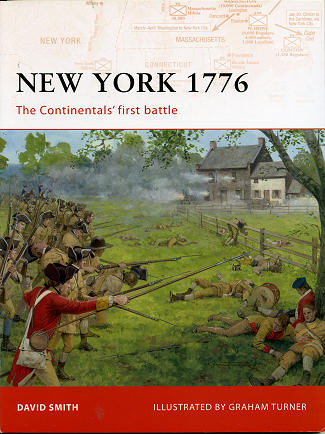 Few
realize that, aside from those in the UK, the largest contingent of British
troops was the approximately 8,000 based in the Colonies of North America. Once
it was realized that there was a full blown rebellion underway, the British did
what they could to regroup and await more troops for an offensive that was hoped
would quickly end the conflict.
Few
realize that, aside from those in the UK, the largest contingent of British
troops was the approximately 8,000 based in the Colonies of North America. Once
it was realized that there was a full blown rebellion underway, the British did
what they could to regroup and await more troops for an offensive that was hoped
would quickly end the conflict.
The British commander pulled out of Boston and went to
Halifax where he could plan the next move. It was seen that the best he could do
was to gain control of the Hudson River valley and thus split the colonies. With
the real troublemakers in New England and their supplies coming from the
Carolinas, it was hoped that this would cause the insurrection to wither on the
vine.
The key to all this was the capture of New York at the
mouth of the Hudson River. To do that, the British landed on Long Island and
moved over the open country and hills, fighting several battles against the
newly formed Continental Army. The Continentals were mainly comprised of various
militias, led by George Washington, a general who wasn't really the best
available (Nathanial Greene was), but he had the ability to hold together the
army through all the various trials and tribulations as well as get victories
(albeit small) when they were most needed.
This book covers the campaign of General Williame Howe
and his troops in the capture of Long Island and New York in 1776. Howe was a
bit of an enigma as he was an excellent planner and his troops fought well, yet
he did not seem to have his heart into things, allowing the Continentals the
opportunity to escape on several occasions, even to the point of allowing them
to take their artillery with them!
In line with other books in this series, there are
specific sections that are common with all. The origins of the campaign, a
chronology of events, the opposing commanders, what the opposing armies were
like and the opposing plans are all laid out for the reader. Then there are the
two major sections to this particular campaign, that being the one to take Long
Island and the one to clear New York itself.
The book provides conclusions on what came after the
battles and how the event steered others that followed. The final section, which
for this subject is quite small, is what the battlefields are like today. Since
this area has been extensively populated and reformed in the last 250 years,
very little actually remains.
It is a superb book on the subject and one that all students
of American history should have in their libraries. I can
recommend to you without reservation.
May 2008
For more on the complete line of Osprey books,
visit www.ospreypublishing.com. In the US, it is
Osprey Direct at 44-02 23rd St, Suite 219, Long Island City, NY 11101., where you can
get a catalogue of available books.
If you would like your product reviewed fairly and quickly by a
site that has nearly 400,000 visitors a month, please contact
me or see other details in the Note to
Contributors.
 Few
realize that, aside from those in the UK, the largest contingent of British
troops was the approximately 8,000 based in the Colonies of North America. Once
it was realized that there was a full blown rebellion underway, the British did
what they could to regroup and await more troops for an offensive that was hoped
would quickly end the conflict.
Few
realize that, aside from those in the UK, the largest contingent of British
troops was the approximately 8,000 based in the Colonies of North America. Once
it was realized that there was a full blown rebellion underway, the British did
what they could to regroup and await more troops for an offensive that was hoped
would quickly end the conflict.